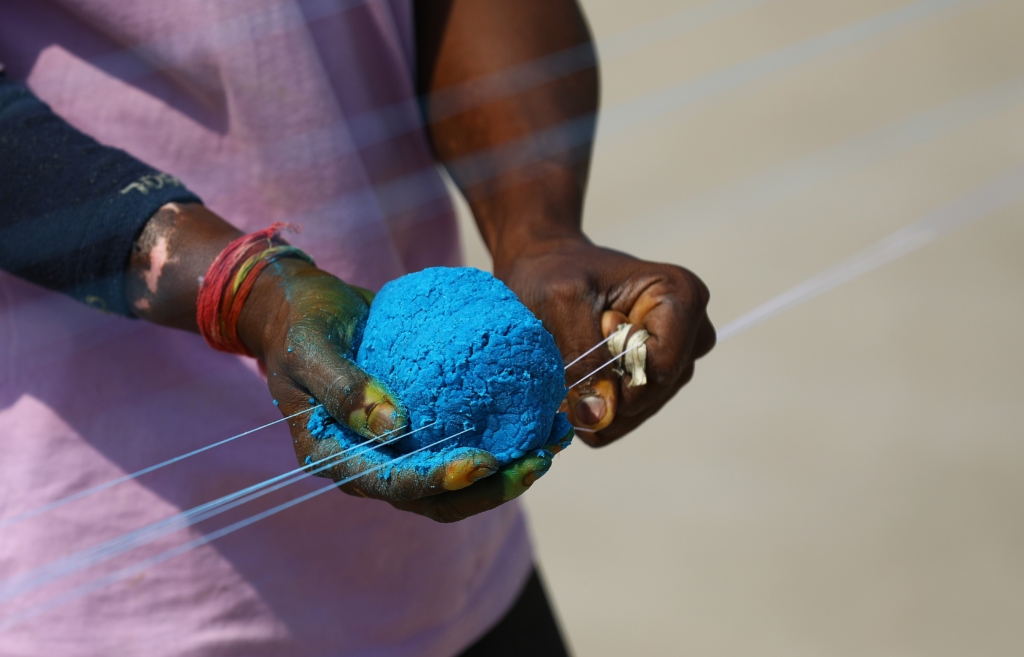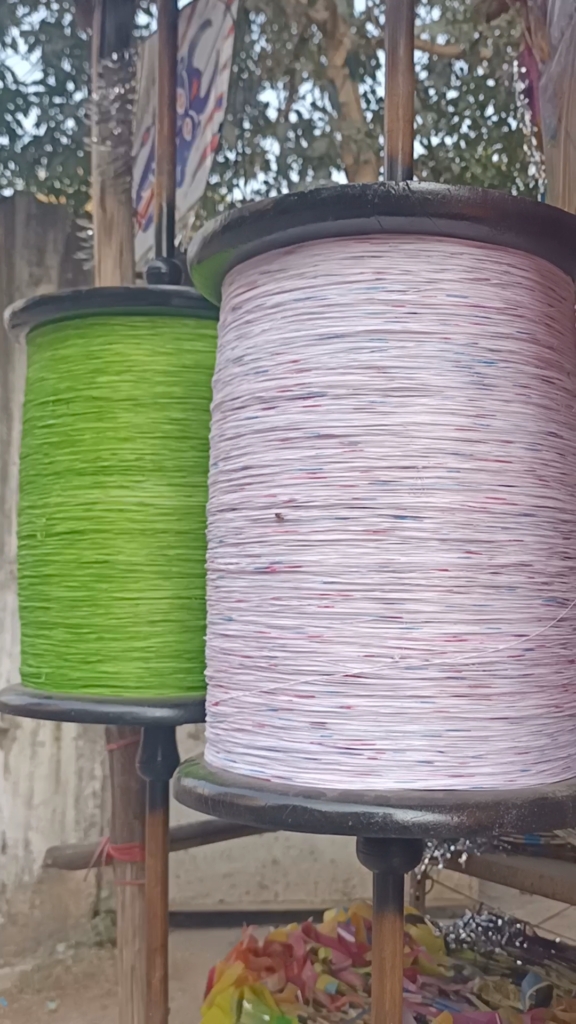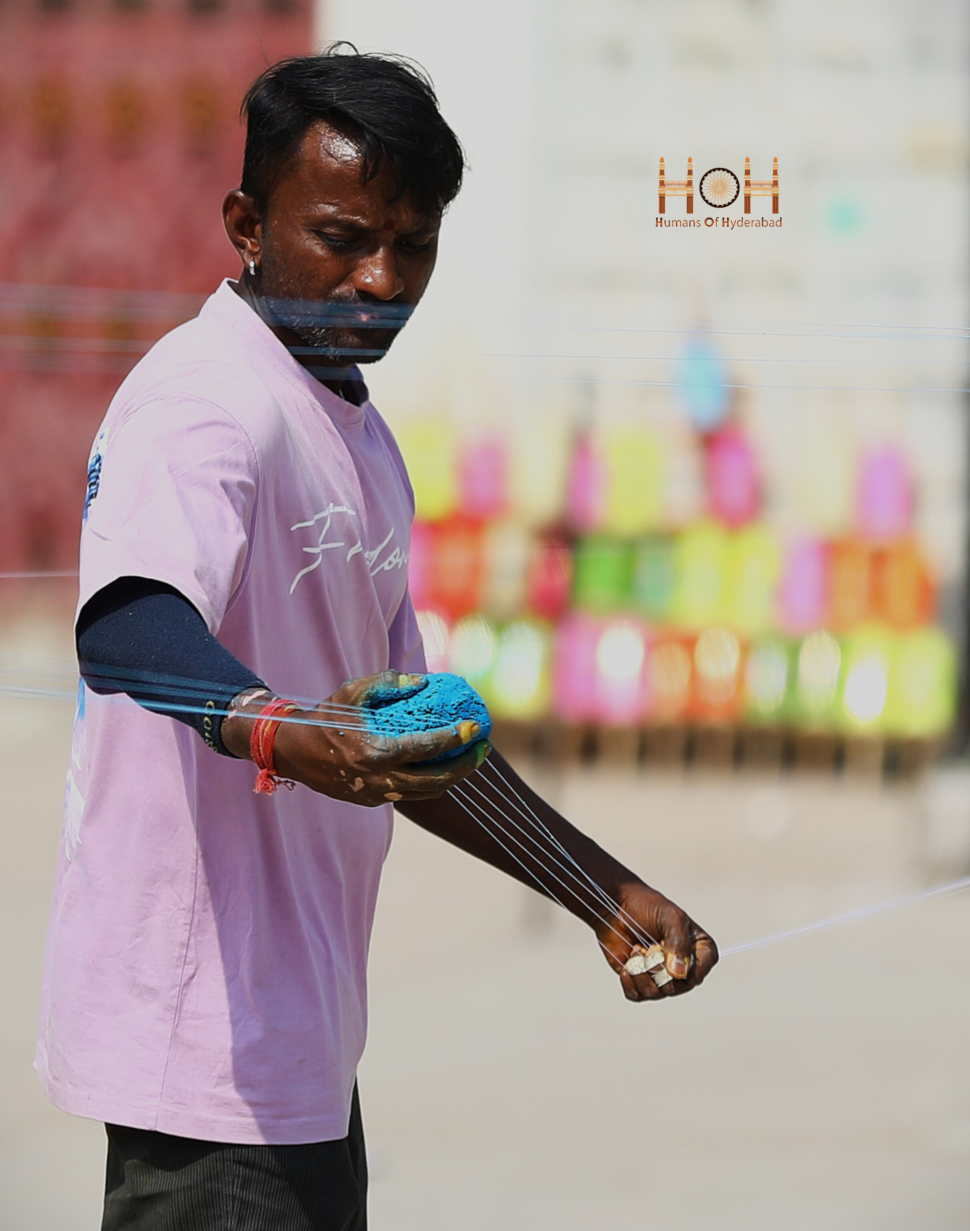With Sankranti approaching, Hyderabad’s kite-flying season is in full swing, especially in the Mangalhat area, where desi manja is made in the traditional way. This craft, passed down through generations, combines rice paste, soap, powder and dyes to create the threads used for flying kites.
In the past, Chinese manjas—nylon threads coated with sharp glass were sold illegally in the market. Though cheaper, these manjas posed risks to birds, animals, and even people. After the government completely banned them due to their dangers, demand for desi manja has surged.

Rakesh Singh, a manja maker from Dhoolpet locality, shares, “My family has been making manja here for over 85 years. People used to reserve their manja months in advance, but now they are all available wholesale.”

For Rakesh’s family, making desi manja is a time-honored tradition. Some family members handle the threads, while others prepare the paste and apply the glass powder. “It’s all about getting the right mix and putting in the effort,” says Rakesh. “It’s something you get better at with time.”
Since the ban on Chinese manjas, Rakesh and his family have seen a steady demand for their product. “We’re happy to keep this tradition going and offer something safer for everyone,” he adds.
As Sankranti draws closer, the tradition of manja making remains an essential part of the celebration. However, some voices still call for a complete ban on all types of manjas, citing concerns about their impact on birds and the environment.
:
#manjamaking #sankranti #kites #desimanja #banonchinesemanja #sankranti2025 #Hyderabad #HumansofHyderabad
